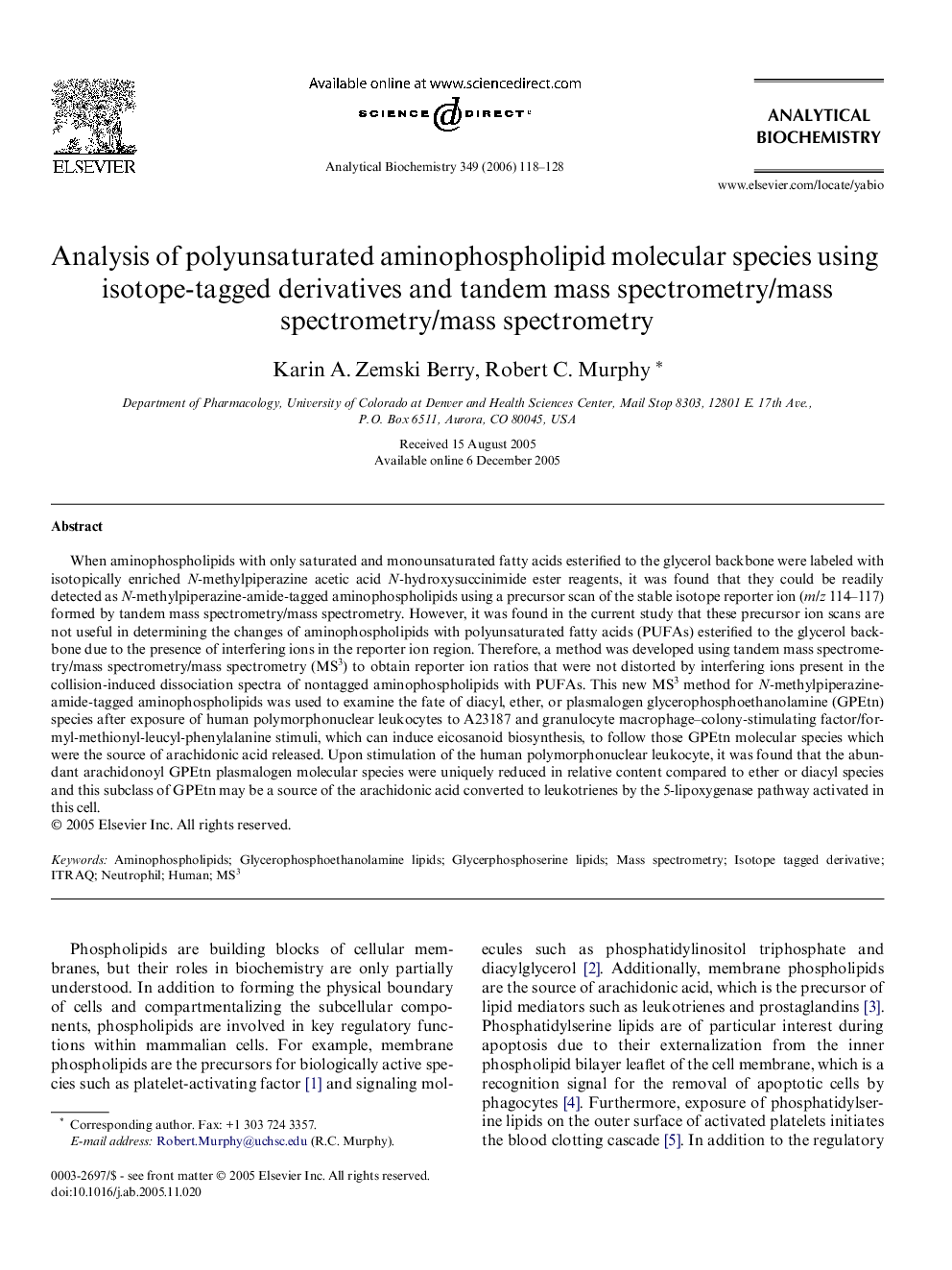| Article ID | Journal | Published Year | Pages | File Type |
|---|---|---|---|---|
| 1176251 | Analytical Biochemistry | 2006 | 11 Pages |
When aminophospholipids with only saturated and monounsaturated fatty acids esterified to the glycerol backbone were labeled with isotopically enriched N-methylpiperazine acetic acid N-hydroxysuccinimide ester reagents, it was found that they could be readily detected as N-methylpiperazine-amide-tagged aminophospholipids using a precursor scan of the stable isotope reporter ion (m/z 114–117) formed by tandem mass spectrometry/mass spectrometry. However, it was found in the current study that these precursor ion scans are not useful in determining the changes of aminophospholipids with polyunsaturated fatty acids (PUFAs) esterified to the glycerol backbone due to the presence of interfering ions in the reporter ion region. Therefore, a method was developed using tandem mass spectrometry/mass spectrometry/mass spectrometry (MS3) to obtain reporter ion ratios that were not distorted by interfering ions present in the collision-induced dissociation spectra of nontagged aminophospholipids with PUFAs. This new MS3 method for N-methylpiperazine- amide-tagged aminophospholipids was used to examine the fate of diacyl, ether, or plasmalogen glycerophosphoethanolamine (GPEtn) species after exposure of human polymorphonuclear leukocytes to A23187 and granulocyte macrophage–colony-stimulating factor/formyl-methionyl-leucyl-phenylalanine stimuli, which can induce eicosanoid biosynthesis, to follow those GPEtn molecular species which were the source of arachidonic acid released. Upon stimulation of the human polymorphonuclear leukocyte, it was found that the abundant arachidonoyl GPEtn plasmalogen molecular species were uniquely reduced in relative content compared to ether or diacyl species and this subclass of GPEtn may be a source of the arachidonic acid converted to leukotrienes by the 5-lipoxygenase pathway activated in this cell.
